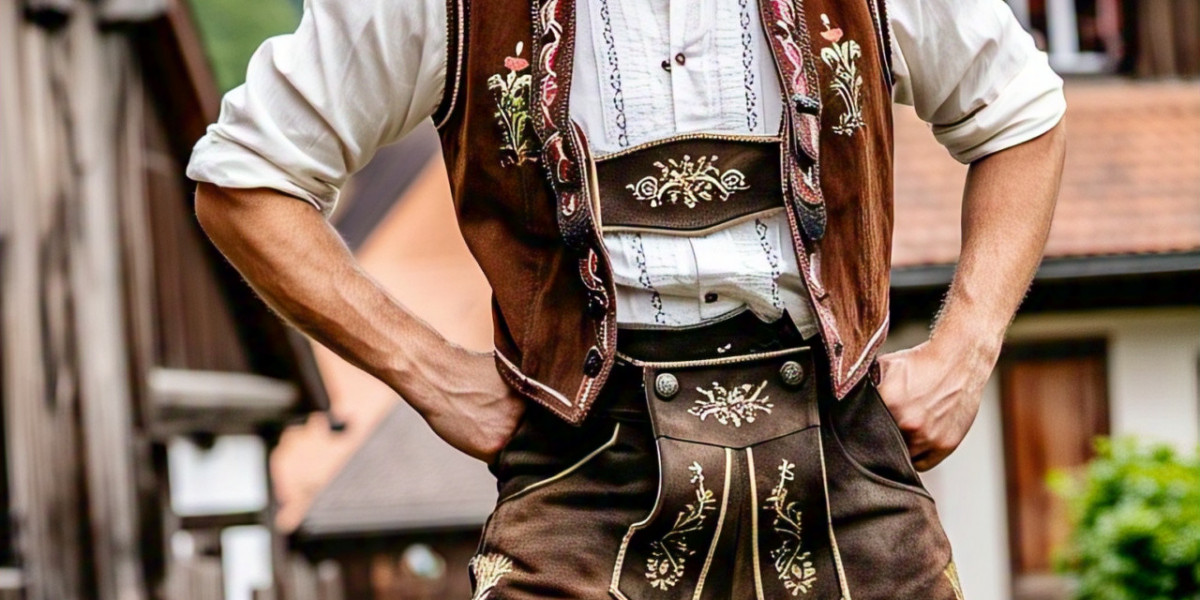Understanding the Origin of Lederhosen
Lederhosen, translating to "leather trousers" in German, are more than just festive clothing—they are a symbol of Alpine heritage. Originating from the Bavarian and Austrian regions in the 18th century, these sturdy garments were initially worn by peasants for hard labor due to their durability. Over time, they transitioned into folk attire and became associated with pride in local customs. Today, Lederhosen represents a nostalgic nod to tradition and craftsmanship. Crafted from genuine leather, they showcase exceptional tailoring and timeless aesthetics. Wearing them is a cultural statement, celebrating generations of craftsmanship and regional pride.
The Symbolic Significance in Bavarian Culture
In Bavarian culture, Lederhosen are not just costumes—they're deeply woven into the identity of the region. Worn during folk festivals like Oktoberfest, weddings, and parades, they symbolize heritage and communal pride. Men wear them with embroidered suspenders and checkered shirts, representing local craftsmanship and status. These garments have become intergenerational, passed down as heirlooms. Bavarians view Lederhosen as a respectful nod to their ancestors, making them one of the most cherished traditional outfits in Germany. Owning and wearing a pair is seen as embracing and preserving cultural heritage.
Traditional Components of a Lederhosen Outfit
A traditional Lederhosen outfit includes more than just the shorts. Typically made of deerskin, the pants come with H-shaped suspenders adorned with embroidery. They're paired with a checkered or plain button-up shirt, woolen socks, and Haferlschuhe—a specific type of leather shoe. Accessories like feathered hats or alpine vests add extra flair. For colder seasons, men often wear a woolen jacket called a Janker. This full ensemble captures the essence of Alpine tradition while offering a rugged, stylish appearance. Each piece has historical significance and adds character to the overall look.
Variations in Lederhosen: Short, Knee-Length, and Bundhosen
Lederhosen come in various lengths and styles to suit different occasions and preferences. The most common styles include short (above-the-knee), knee-length, and Bundhosen, which extend below the knee. While short Lederhosen are more casual and worn at summer festivals, Bundhosen are better suited for colder weather and formal events. Each type maintains traditional elements like detailed stitching and horn buttons. If you're looking for a high-quality option, explore traditional men’s Bundhosen collections designed to combine authentic craftsmanship with modern comfort.
How to Style Lederhosen for Oktoberfest
Oktoberfest is the most iconic event to showcase Lederhosen. For this festive occasion, opt for a classic knee-length pair with detailed embroidery. Pair it with a traditional checkered shirt—red or blue are popular choices. Add woolen socks that reach your calves and wear Haferlschuhe for a polished finish. You can also incorporate accessories like a felt hat with feathers, a leather belt with alpine motifs, or a pocket watch for added flair. Remember to keep your look respectful and rooted in tradition, avoiding overly touristy or costume-like additions.
Modern Takes on Lederhosen in Fashion
While Lederhosen remain deeply traditional, modern designers have begun to experiment with new fabrics, cuts, and colors. Contemporary styles may feature slimmer fits, synthetic leather alternatives, or modern embellishments. Some fashion-forward individuals pair Lederhosen with polos or even hoodies for a casual, streetwear-inspired look. These modern adaptations maintain the original spirit while appealing to a younger, style-conscious audience. Even with these changes, the essence of Lederhosen—heritage, ruggedness, and individuality—remains intact, making them a versatile addition to any wardrobe that values cultural flair.
Choosing the Right Shirt for Your Lederhosen
Selecting the perfect shirt is crucial to complete your Lederhosen look. Traditional options include checkered shirts in red, blue, or green, made from cotton or linen. Solid white or pastel-colored shirts are also acceptable, offering a more elegant and refined appearance. The shirt should be well-fitted but comfortable, allowing ease of movement. Avoid overly modern or graphic prints that distract from the authenticity of the outfit. Rolling up the sleeves can add a relaxed vibe, especially during summer festivals. The right shirt enhances the outfit's balance and reinforces its timeless appeal.
Footwear and Accessories That Complete the Look
Proper footwear is essential when wearing Lederhosen. Haferlschuhe, the traditional lace-up shoes made of black or brown leather, are the go-to choice. These are designed for comfort and durability, suitable for long festival days. Pair them with high wool socks or Loferl, the traditional Bavarian calf warmers. Accessories like alpine hats, leather belts with ornate buckles, and even classic wristwatches can enhance your look. These elements not only elevate your outfit but also show attention to detail, blending traditional roots with personal style.
When and Where to Wear Lederhosen Today
Lederhosen are traditionally worn at cultural events such as Oktoberfest, beer festivals, folk dances, and weddings. However, their popularity has grown beyond Bavaria, and they are now commonly seen at international German-themed events. Some also wear them for holiday gatherings, costume parties, or even photo shoots. The key is knowing the context. Always wear Lederhosen with respect to its cultural roots and avoid using them in inappropriate or disrespectful ways. When worn correctly, they become a meaningful expression of heritage and a stylish standout.
How to Properly Maintain Your Lederhosen
Lederhosen are made from high-quality leather, requiring proper care to maintain their appearance and durability. Avoid machine washing; instead, spot clean with a damp cloth and mild soap. Allow them to air dry naturally—never use heat or direct sunlight. To maintain their shape and softness, apply a leather conditioner periodically. Store them in a cool, dry place, preferably hanging rather than folded. With proper maintenance, a good pair of Lederhosen can last for decades, becoming more comfortable and unique with age as the leather forms to your body.








